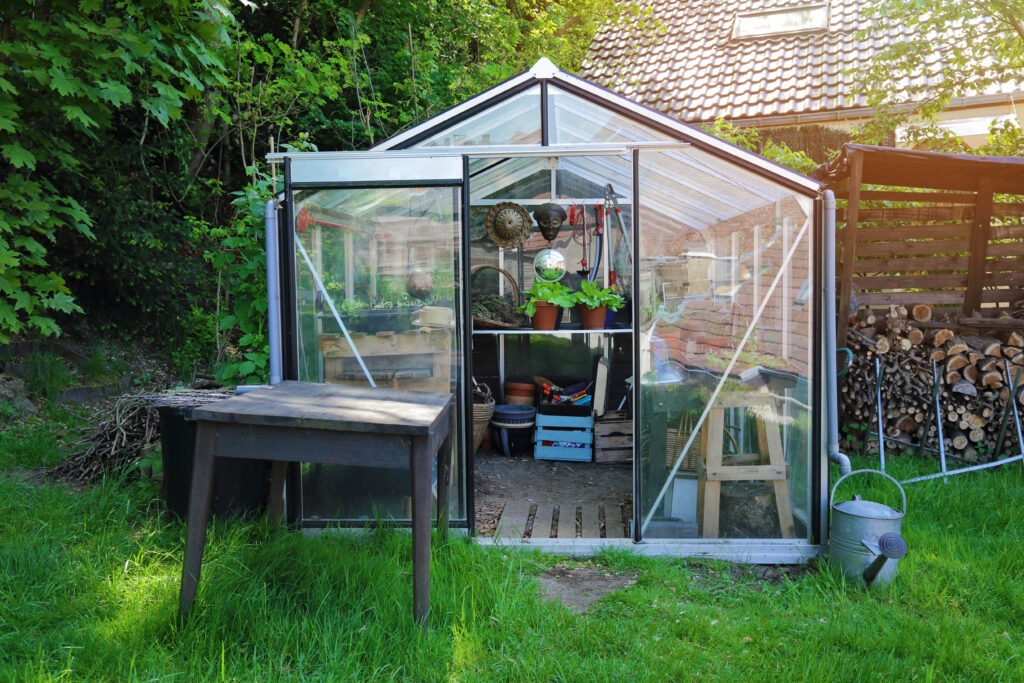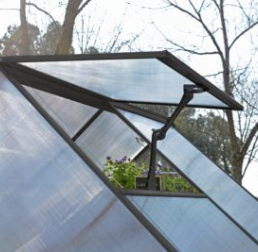5 Pros And Cons Of Greenhouse Kits
Guest Post
Greenhouse kits offer a convenient and efficient way for individuals to cultivate plants, flowers, and vegetables in controlled environments.
 These kits come in various sizes, designs, and materials, catering to the diverse needs of gardeners and horticulturists.
These kits come in various sizes, designs, and materials, catering to the diverse needs of gardeners and horticulturists.
However, like any product, greenhouse kits have their own set of advantages and disadvantages.
Understanding these pros and cons can help potential buyers make informed decisions before investing in a greenhouse kit.
Pros
Easy Assembly: One of the primary advantages of greenhouse kits is their ease of assembly. Most kits come with pre-cut materials and detailed instructions, simplifying construction. This feature mainly benefits individuals with limited DIY skills or who prefer hassle-free setups. Maze greenhouse kits, for instance, are designed to be user-friendly, allowing even novices to build their greenhouse quickly. Watch this video about assembling this kit:
Affordability: Compared to building a traditional greenhouse from scratch, greenhouse kits are often more cost-effective. These kits eliminate the need to purchase individual materials in bulk, saving time and money. Additionally, greenhouse kits typically include frames, panels, and hardware, reducing the overall cost of constructing a greenhouse.
Portability: Many greenhouse kits are designed to be portable, allowing users to relocate them as needed. This flexibility is especially beneficial for renters or individuals with limited outdoor space. Portable greenhouse kits are lightweight and can be easily disassembled and moved, making them ideal for temporary or seasonal use.
Climate Control: Greenhouse kits provide a controlled environment for plants, offering protection from harsh weather elements, such as frost, wind, and excessive sunlight. Users can regulate temperature, humidity, and ventilation with adjustable vents, windows, and shading systems to create optimal growing conditions for different plant species.
Space Optimization: Greenhouse kits maximize space utilization, allowing individuals to grow various plants in a compact area. Whether placed in a backyard, balcony, or rooftop, these kits enable gardeners to cultivate crops year-round without requiring expansive outdoor land. Vertical greenhouse kits are also available for those with limited horizontal space, further optimizing growing capacity.
Cons
Limited Size Options: While greenhouse kits offer convenience and affordability, they often come in standard sizes, limiting customization options for users with specific spatial requirements. This makes them not ideal for individuals seeking larger or custom-designed greenhouse structures.
Durability Concerns: Some greenhouse kits may lack the durability and structural integrity of traditional greenhouse constructions. Kits made from lightweight materials, such as PVC or thin aluminum frames, may be prone to damage from strong winds, heavy snow loads, or prolonged exposure to sunlight. Additionally, cheaper greenhouse kits may deteriorate quickly, requiring frequent repairs or replacements.
Temperature Control Challenges: Despite climate-controlled features, greenhouse kits may find it challenging to maintain consistent temperatures throughout the year because of their limited insulation. In extreme weather conditions, such as heatwaves or cold snaps, greenhouse kits may struggle to adequately regulate internal temperatures, leading to stress or damage to plants. Supplemental heating or automatic vents may be necessary to address temperature fluctuations effectively.
Limited Structural Integrity: Greenhouse kits are often made of lighter materials, so they may need more structural integrity than professionally constructed greenhouses. DIY kits assembled by inexperienced individuals may be more susceptible to leaks, gaps, or uneven foundations, compromising the overall stability and functionality of the greenhouse.
Maintenance Requirements: Like any outdoor structure, greenhouse kits require regular maintenance to ensure optimal performance and longevity. This includes cleaning panels, lubricating hinges, inspecting frames for rust or corrosion, and replacing worn-out components. Failure to properly maintain a greenhouse kit can result in reduced efficiency, diminished plant growth, and costly repairs in the long run.
Choosing a Greenhouse Kit
Choosing the fitting greenhouse kit involves considering several factors to ensure it meets your specific requirements and preferences. Here are some key considerations to keep in mind:
Size And Space: Determine the available space for your greenhouse and consider the size of the kit that will fit best. Think about the number of plants you want to grow and any additional space needed for storage or workspace.
Materials And Durability: Aside from considering the greenhouse design, it’s best to assess the materials used to construct the greenhouse kit. Opt for durable materials, such as aluminum or galvanized steel for frames and UV-resistant polycarbonate panels for glazing. These materials offer longevity and resistance to weathering.
Climate And Location: Consider the environment and location where the greenhouse will be installed. Choose a kit with insulation, ventilation options, and shading systems suited to your local climate. This ensures optimal growing conditions year-round.
Assembly Difficulty: Evaluate your DIY skills and the complexity of the assembly process. Some greenhouse kits are designed for easy assembly with minimal tools and experience required, while others may be more challenging. Choose a kit that matches your expertise and available time for assembly.
Budget: Determine your budget for purchasing and installing a greenhouse kit. Prices can vary significantly depending on size, materials, and features. Balance your budget with the desired quality and functionality of the kit.
Reviews And Recommendations: Research customer reviews and seek recommendations from other gardeners with greenhouse kits experience. Reading about others’ experiences can provide valuable insights into different kits’ quality, performance, and durability.
Warranty And Support: Check the warranty coverage and customer support the manufacturer offers. A reliable warranty ensures protection against defects or issues with the kit, while responsive customer support can assist with any questions or concerns during assembly or use.
Final Thoughts
Greenhouse kits offer numerous benefits, including ease of assembly, affordability, portability, climate control, and space optimization.
However, potential drawbacks—such as limited size options, durability concerns, temperature control challenges, structural integrity issues, and maintenance requirements—should also be considered before purchasing a greenhouse kit.
Ultimately, investing in a greenhouse kit should be based on individual preferences, budget constraints, and specific gardening needs.
